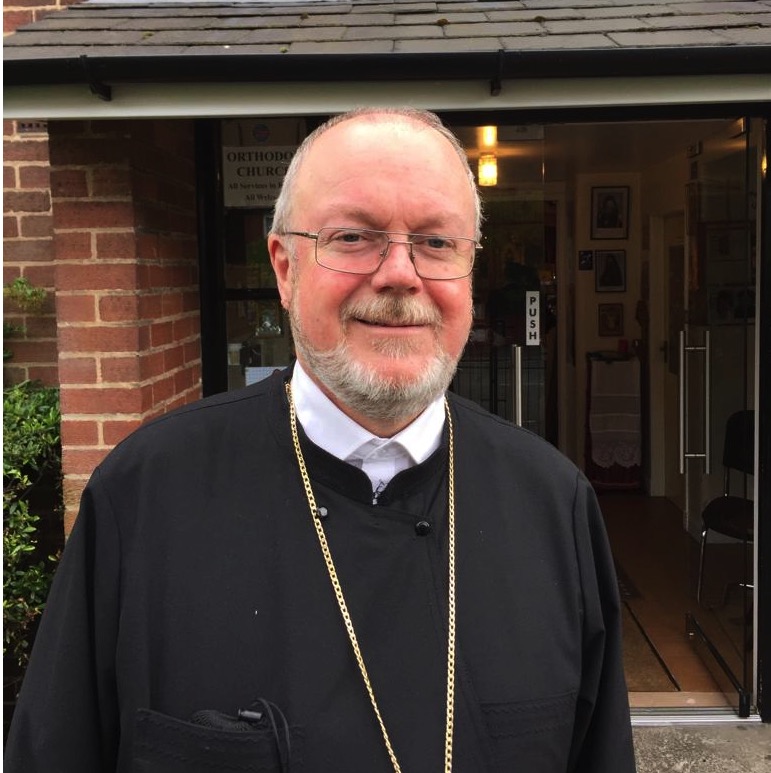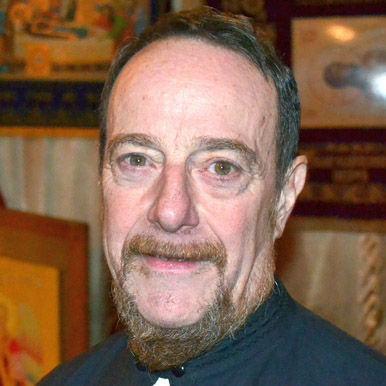The entry of the Mother of God into the temple is one of the 12 major feasts of the Orthodox Church, perhaps notable by the fact that it is attested to in Tradition but not in Holy Scripture. Arguably the West has never accorded this feast the same dignity as in the Christian East, although it seems to have been fairly well-established here from the 14th century. There may be another reason for its neglect in the west and it is this which I wish to explore with you today. If my theory concerning this is correct then there are far-reaching implications that derive from both the legacy of St Augustine on original sin and the Western dogma of the Immaculate Conception, a dogma defined in more modern times by Rome. This is not merely of academic interest. The differences we observe here between East and West have huge significance for our Christian lives and the hope of salvation. Let us therefore go on to consider this matter further.
The feast of the Entry of the Mother of God affirms the vital importance of the Panagia’s time of preparation as a young girl in the Temple at Jerusalem prior to her momentous assent to the message of Archangel Gabriel that she would conceive a child by the Holy Spirit in her womb who was to be named Jesus. This time of preparation is no mere sentimental story. It indicates the progressive ascetical purification of Our Lady to be a vessel most fit for the birth of the Messiah; that is Christ our God, who received his sinless humanity from the Theotokos herself at the moment of his conception in her womb. By the time of the Incarnation, the Mother of God had attained to such a state of grace that her own purity made this possible. Christ could not of course be born of a sinful woman, but, and this is the crucial point, Mary was not born a sinless woman. She needed that time in the Temple to purify herself in readiness for her divine role to become the Birth-Giver of God, the Theotokos. She was no mere passive instrument of God’s will but rather an active flesh and blood human participant, just like you or I, but one whose radical commitment to being transformed by the Holy Spirit perhaps surpass the efforts of all of us both before and since. Our Lady, in this time of preparation in the most holy Temple in Jerusalem, gives us great confidence that the perfection of our humanity arising from both divine grace and our freely willed and faithful dedication is indeed possible. Moreover, we have the means to achieve this by God’s grace through faith, prayer, fasting and other forms of self-denial, all active in love. In Orthodoxy’s understanding we do not have to be born perfect to be perfected in later life. Indeed, the whole purpose of our life is to achieve that perfection by the full acquisition of the Holy Spirit.
The post Orthodox Christian West, however, had and has a very different starting point. Under the growing influence of St Augustine, particularly in the Middle Ages, this confidence that all human beings have the capacity for perfection was increasingly eroded by the heresy that it would be impossible for anyone after birth to escape the ravages of original sin. St Augustine had taught that the Fall rendered all human beings, even in utero and in infancy a massa damnata, that is, to render the Latin, destined for hell and only having the possibility of salvation by the intervention of divine grace. Against this, in the Christian East, Mary’s purity could be acquired during her developing human life after birth. In the late Christian West, Mary’s purity could only be achieved by a singular act of divine grace without human cooperation at the moment of her birth. This gave rise in the west to the dogma of Mary’s Immaculate Conception - by which is meant that she was born free of all taint of original sin, precisely in order to be able later as a young woman to conceive Christ in her womb.
Now some may object: “is it really necessary to determine whether Mary’s purity was given to her at birth or later after a period of ascetical transformation in the Temple?” “Yes,” the Orthodox reply: “it is necessary to determine this rightly.” The purification of Mary, by which we infer that her salvation cannot be a ‘done deal’ at her birth in the Immaculate Conception. Why? Because this does violence to the gospel truth that all can be saved, as indeed the Virgin was, in this life and not before this life. In the heterodox Latin West there seemed after this to develop a notion that there were two different humanities: Mary’s and our own, the former effortless and superior to the latter. This meant that, by definition, we could never aspire to the same state of grace as a Mother of God for only she had been immaculately conceived, aside of course from Christ Himself (who admittedly was sinless by nature and not by grace; in that East and West of course agree).
This identity of Mary’s humanity with our own - which is so essential to the Incarnation and the possibility of salvation in the fullest sense not only for her but also for us - is why the Orthodox repudiate the Latin dogma of the Immaculate Conception. This pernicious dogma cuts the faithful off from the possibility of deification, of an ascension to heaven in like manner to the Dormition of the Ever-Virgin Mary herself. In repudiating this dogma, however, the Orthodox affirm clearly and strongly what takes its place for us and this is declared by the rationale of the Entry the Mother of God into the Temple celebrated at this time.
We, with her, have the possibility ourselves of entering a new Temple, a Heavenly Jerusalem, not made by human hands but which is a hallowed place in our hearts and lives for the same prayer, faith, and ascetical transformation that the Theotokos practised and received. We too, with her, can be “full of grace”, can be full of the Holy Spirit; conceiving Christ not in the womb but in the whole person, such that we become little Christs, growing day by day into the fullness of the stature of the Incarnate Logos, a humanity deified by grace. To say that all of this purification has to happen before our birth to be effective (on account of some alleged persistent fatal defect of original sin) is to deny salvation in its fullest sense to all. It not only elevates Mary to a position beyond our common humanity, it also relegates us to a second division of salvation, in fact, therefore, no salvation at all.
You see, ours is a more hopeful and coherent doctrine. Simply put it insists the salvation lies within the reach of us all and that the tragedy of the Fall does not compromise our ability to seek God and find Him, to know God and love Him, to relate to God and serve Him. To be fair to the post schism West, the sense of this truth was never completely lost but it was hugely overshadowed by that toxic doctrine of the massa damnata, a cage from which no songbird could break free unless she or he was born outside the cage. We, on the other hand, know that the cage door can be opened from the inside if not the outside. All we have to do as human beings, fully alive and active with our God-given faculties, is to reach out and open that latch. The Mother of God did that and gained her freedom and not only her freedom but also the freedom of the whole human race. In this manner she, by divine grace, freed herself from the shackles of sin, inherited or otherwise, and became a liberated daughter of God ready to say “yes” to the voice of an angel in order that the whole human race might be freed by Christ.

 Archpriest Gregory Hallam
Archpriest Gregory Hallam
 Fr. Emmanuel Kahn
Fr. Emmanuel Kahn